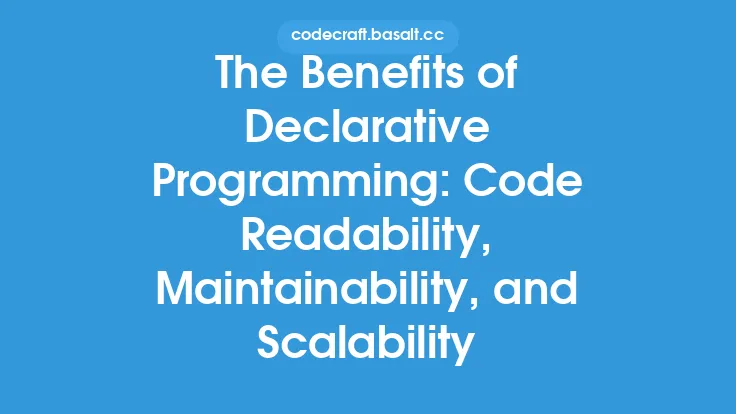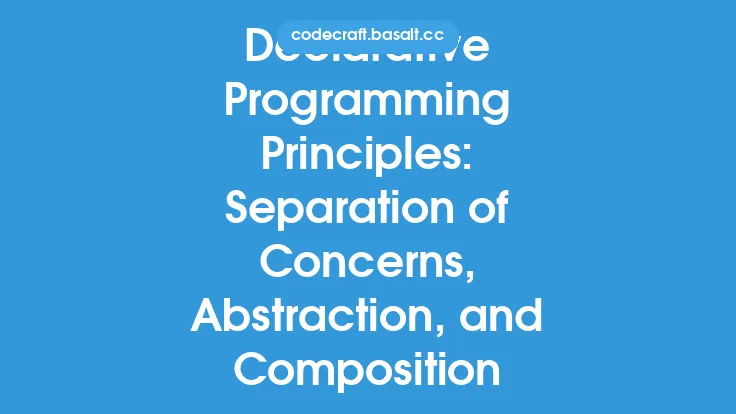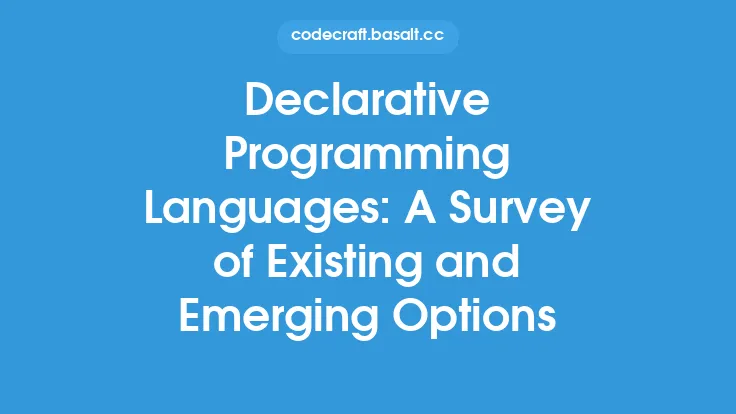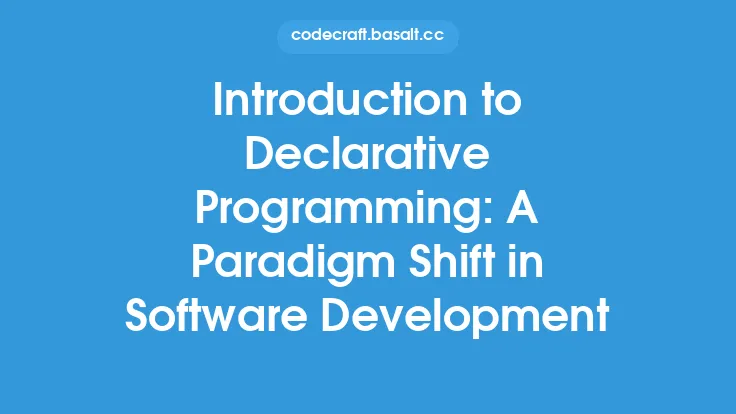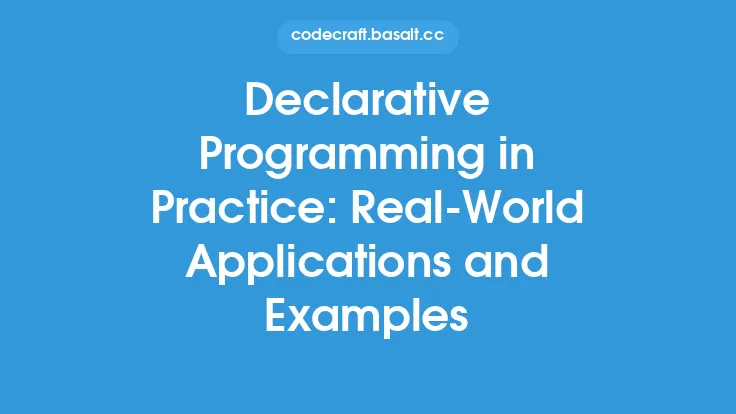Declarative programming is a paradigm that focuses on specifying what the program should accomplish, rather than how it should accomplish it. This approach is in contrast to imperative programming, which emphasizes the steps the program should take to achieve a particular goal. By focusing on the what, rather than the how, declarative programming enables developers to write more concise, readable, and maintainable code.
Key Characteristics of Declarative Programming
Declarative programming has several key characteristics that distinguish it from other programming paradigms. One of the most important is the use of declarations, which specify the properties and behavior of the program, rather than the steps it should take to achieve a particular goal. These declarations are typically expressed using a formal language, such as a logic-based language or a functional programming language. Another key characteristic of declarative programming is the emphasis on abstraction, which enables developers to focus on the essential features of the program, without worrying about the details of how they are implemented.
Declarative Programming Models
There are several declarative programming models, each with its own strengths and weaknesses. One of the most well-known is the functional programming model, which emphasizes the use of pure functions, immutability, and recursion. Functional programming languages, such as Haskell and Lisp, are designed to support this model, and provide a range of features, such as type inference and lazy evaluation, that make it easier to write declarative code. Another important declarative programming model is the logic programming model, which is based on formal logic and emphasizes the use of logical statements and inference rules. Prolog is a well-known logic programming language that is widely used in artificial intelligence and other applications.
Declarative Programming Techniques
Declarative programming techniques are used to implement declarative programming models. One of the most important techniques is the use of higher-order functions, which are functions that take other functions as arguments or return functions as output. Higher-order functions enable developers to abstract away from the details of how a particular task is performed, and focus on the what, rather than the how. Another important technique is the use of closures, which are functions that have access to their own scope and can capture variables from that scope. Closures provide a way to implement abstraction and encapsulation in declarative programming languages.
Declarative Programming and Data Processing
Declarative programming is particularly well-suited to data processing applications, where the focus is on specifying what data should be processed, rather than how it should be processed. Declarative programming languages, such as SQL and MDX, provide a range of features, such as query languages and data manipulation statements, that make it easy to specify data processing tasks. These languages also provide a range of optimization techniques, such as query optimization and indexing, that enable developers to improve the performance of data processing applications.
Declarative Programming and Artificial Intelligence
Declarative programming is also widely used in artificial intelligence applications, where the focus is on specifying what the program should accomplish, rather than how it should accomplish it. Declarative programming languages, such as Prolog and Mercury, provide a range of features, such as logical statements and inference rules, that make it easy to specify artificial intelligence tasks. These languages also provide a range of techniques, such as reasoning and problem-solving, that enable developers to implement complex artificial intelligence applications.
Advantages of Declarative Programming
Declarative programming has several advantages, including improved code readability, maintainability, and scalability. By focusing on the what, rather than the how, declarative programming enables developers to write more concise and readable code, which is easier to understand and maintain. Declarative programming also enables developers to abstract away from the details of how a particular task is performed, which makes it easier to modify and extend existing code. Additionally, declarative programming provides a range of features, such as lazy evaluation and memoization, that enable developers to improve the performance of their applications.
Challenges of Declarative Programming
Despite its advantages, declarative programming also has several challenges, including the need for specialized programming languages and the potential for performance overhead. Declarative programming languages, such as Haskell and Prolog, require a significant investment of time and effort to learn, and may not be as widely supported as imperative programming languages. Additionally, declarative programming can result in performance overhead, due to the need to evaluate expressions and manipulate data structures. However, these challenges can be mitigated by using optimized declarative programming languages and techniques, such as just-in-time compilation and caching.
Conclusion
In conclusion, declarative programming is a powerful paradigm that enables developers to focus on specifying what the program should accomplish, rather than how it should accomplish it. By using declarative programming models, techniques, and languages, developers can write more concise, readable, and maintainable code, which is easier to understand and modify. Declarative programming is particularly well-suited to data processing and artificial intelligence applications, where the focus is on specifying what the program should accomplish, rather than how it should accomplish it. While declarative programming has several advantages, it also has several challenges, including the need for specialized programming languages and the potential for performance overhead. However, these challenges can be mitigated by using optimized declarative programming languages and techniques.
